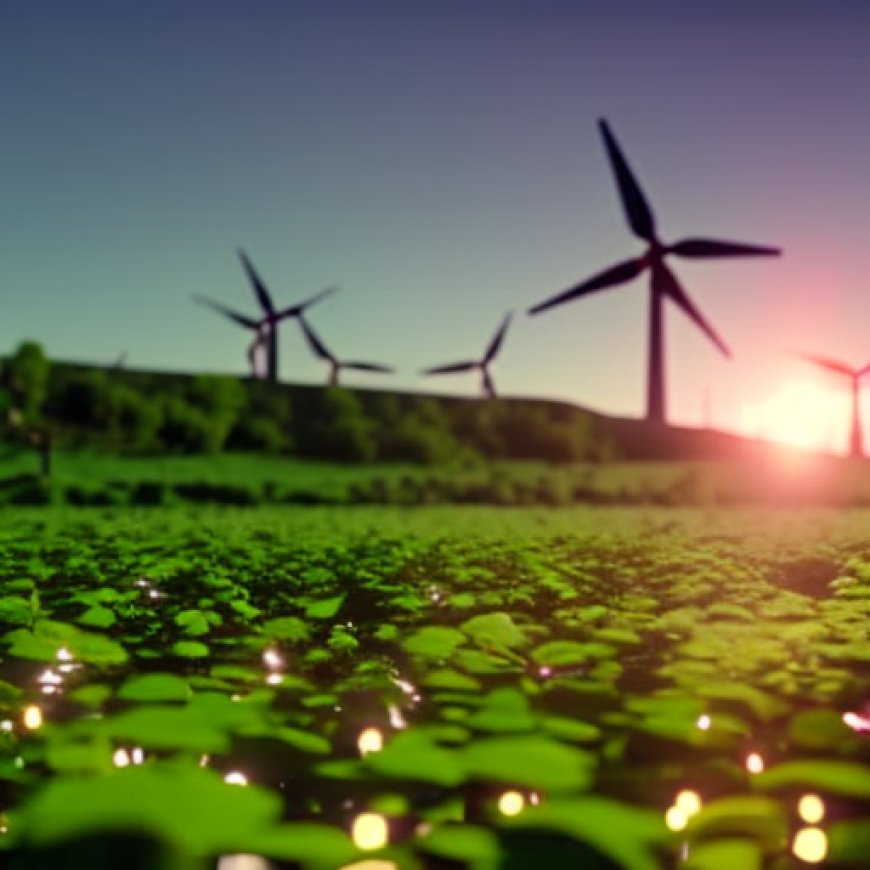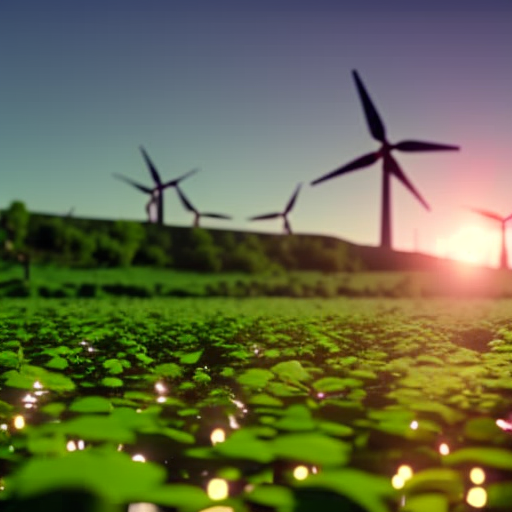Clean energy, one community at a time
Clean energy, one community at a time EurekAlert


Report: Sustainable Energy Initiatives for Communities
Introduction
By Rebekah Orton
Heating and cooling a home. Lighting for reading or studying. Cooking and storing food. Refrigerating medications. Traveling to a job or school. Energy unlocks access to nearly everything, so communities without reliable energy can experience not only daily hardship, but also long-term disadvantages.
Many communities are highly dependent on fossil fuels, like diesel for power, which is costly and carbon intensive. But shifting to renewable energy sources comes with high start-up costs and risks, so resource-limited communities, particularly those that are underserved, often need support to make the switch to cleaner local energy.
Communities also might not have the time, experience, or other needed resources to overcome the challenges associated with their limited access to energy. Complex systems, intricate processes, and other barriers can stand in the way of accessing the programs and resources that could help.
Coal Redevelopment and Community Revitalization
Researchers at Pacific Northwest National Laboratory (PNNL) are providing technical assistance research that can help communities pursue sustainable energy options and increase their energy resilience. One of their recent projects focuses on coal redevelopment and community revitalization.
PNNL is channeling its expertise to create a vision of economic revitalization for communities central to America’s coal industry. Although federal support opportunities to remediate and redevelop coal energy assets exist, the community transition process isn’t clear.
PNNL’s coal redevelopment efforts include an interactive coal power plant redevelopment visualization map that synthesizes all the available information from nearly 200 retired or retiring coal power plants. From this, communities can explore boots-on-the-ground actions to restore the environment, pursue community revitalization, or redevelop a coal plant into an alternative energy site—and anything in between.
Harnessing Wind, Waves, and More in Alaska
Another project by PNNL focuses on Sitka, a community in the southeastern Alaskan panhandle. Sitka’s grid relies on nearly 100 percent renewable energy, but with the community’s expansion and plans to electrify more vehicles and vessels, demand for electricity will increase. PNNL partnered with Sitka and other partners to explore the feasibility of renewable options and assess the electrical infrastructure to enable the community to leverage existing assets while improving their capabilities.
The partnership has opened up additional opportunities for Sitka, including a second round with Energy Transitions Initiative Partnership Project and an additional partnership through DOE’s Clean Energy to Communities Program.
Energy Storage for Social Equity
PNNL is also involved in DOE’s Energy Storage for Social Equity (ES4SE) Initiative, which aims to empower disadvantaged communities to consider energy storage technologies as a path toward community prosperity, well-being, and resilience. PNNL provides technical assistance while Sandia National Laboratories leads deployment assistance. Together, they co-design and co-develop solutions that integrate techno-economic analysis with equity, workforce opportunities, and social benefits.
Each community’s proposed project concepts and designs are aligned with their goals, energy plans, and needs. The program also helps connect communities to existing funding opportunities for projects within and outside of ES4SE.
Conclusion
PNNL’s research and technical assistance efforts are contributing to sustainable energy initiatives in various communities. By providing support for coal redevelopment, exploring renewable options in Alaska, and promoting energy storage for social equity, PNNL is helping communities pursue cleaner and more resilient energy sources. These initiatives align with the Sustainable Development Goals (SDGs), particularly SDG 7: Affordable and Clean Energy, and SDG 11: Sustainable Cities and Communities.
This work was supported by the DOE’s Office of Policy, the Office of Energy Efficiency and Renewable Energy’s Water Power Technologies Office, and the Office of Electricity.
About PNNL
Pacific Northwest National Laboratory (PNNL) is a research institution that draws on its strengths in chemistry, Earth sciences, biology, and data science to advance scientific knowledge and address challenges in sustainable energy and national security. PNNL is operated by Battelle for the Department of Energy’s Office of Science, which is the single largest supporter of basic research in the physical sciences in the United States.
For more information, visit https://www.pnnl.gov/.
SDGs, Targets, and Indicators
-
SDG 7: Affordable and Clean Energy
- Target 7.1: By 2030, ensure universal access to affordable, reliable, and modern energy services.
- Target 7.2: Increase substantially the share of renewable energy in the global energy mix.
- Indicator: Percentage of population with access to electricity.
-
SDG 9: Industry, Innovation, and Infrastructure
- Target 9.4: Upgrade infrastructure and retrofit industries to make them sustainable, with increased resource-use efficiency and greater adoption of clean and environmentally sound technologies and industrial processes.
- Indicator: Proportion of population that has convenient access to public transport.
-
SDG 11: Sustainable Cities and Communities
- Target 11.6: By 2030, reduce the adverse per capita environmental impact of cities, including by paying special attention to air quality and municipal and other waste management.
- Indicator: Proportion of urban solid waste regularly collected and with adequate final discharge out of total urban solid waste generated.
Analysis
The article addresses several Sustainable Development Goals (SDGs) related to energy access, renewable energy, and sustainable communities. The specific targets and indicators identified are as follows:
SDG 7: Affordable and Clean Energy
The article discusses the need for communities to transition from fossil fuels to renewable energy sources. This aligns with SDG 7, which aims to ensure universal access to affordable, reliable, and modern energy services. The targets identified are:
- Target 7.1: By 2030, ensure universal access to affordable, reliable, and modern energy services.
- Target 7.2: Increase substantially the share of renewable energy in the global energy mix.
The article mentions the need for communities to have access to technical assistance and resources to pursue sustainable energy options and increase their energy resilience. This can be measured by the indicator “Percentage of population with access to electricity.”
SDG 9: Industry, Innovation, and Infrastructure
The article discusses the need to upgrade infrastructure and retrofit industries to make them sustainable, with increased resource-use efficiency and greater adoption of clean and environmentally sound technologies and industrial processes. This aligns with SDG 9, which focuses on industry, innovation, and infrastructure. The target identified is:
- Target 9.4: Upgrade infrastructure and retrofit industries to make them sustainable, with increased resource-use efficiency and greater adoption of clean and environmentally sound technologies and industrial processes.
The article mentions the importance of convenient access to public transport, which can be measured by the indicator “Proportion of population that has convenient access to public transport.”
SDG 11: Sustainable Cities and Communities
The article discusses the need to reduce the adverse per capita environmental impact of cities, including air quality and waste management. This aligns with SDG 11, which focuses on sustainable cities and communities. The target identified is:
- Target 11.6: By 2030, reduce the adverse per capita environmental impact of cities, including by paying special attention to air quality and municipal and other waste management.
The article mentions the importance of proper waste management, which can be measured by the indicator “Proportion of urban solid waste regularly collected and with adequate final discharge out of total urban solid waste generated.”
Table: SDGs, Targets, and Indicators
| SDGs | Targets | Indicators |
|---|---|---|
| SDG 7: Affordable and Clean Energy |
|
Percentage of population with access to electricity. |
| SDG 9: Industry, Innovation, and Infrastructure |
|
Proportion of population that has convenient access to public transport. |
| SDG 11: Sustainable Cities and Communities |
|
Proportion of urban solid waste regularly collected and with adequate final discharge out of total urban solid waste generated. |
Behold! This splendid article springs forth from the wellspring of knowledge, shaped by a wondrous proprietary AI technology that delved into a vast ocean of data, illuminating the path towards the Sustainable Development Goals. Remember that all rights are reserved by SDG Investors LLC, empowering us to champion progress together.
Source: eurekalert.org

Join us, as fellow seekers of change, on a transformative journey at https://sdgtalks.ai/welcome, where you can become a member and actively contribute to shaping a brighter future.







